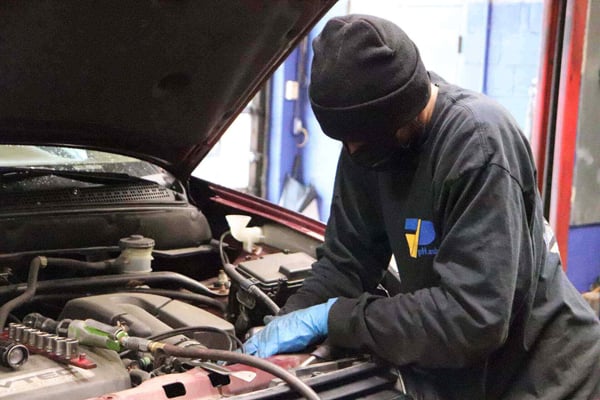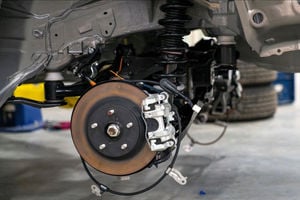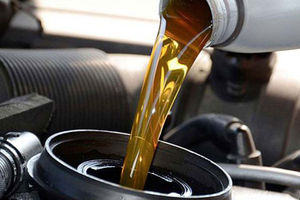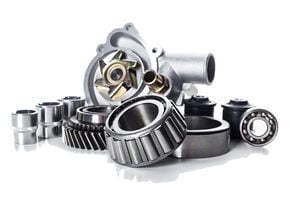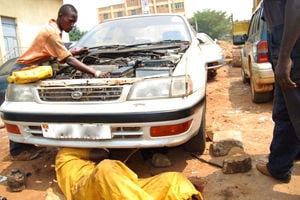
All spare parts are assigned part numbers and the number of the part you are buying will be similar to the one you are replacing. PHOTO/ courtesy.
Most, if not all, car owners are usually satisfied when they purchase durable spare parts. Unfortunately, this is not always the case, as the quality is not always guaranteed.
Emmanuel Muyombya, a spare parts dealer at Wycliffe Emmanuel Motors Limited in Kampala, recommends obtaining spare parts from genuine sources, even if they may be more expensive, as they tend to be more durable in the long run.
On the other hand, cheaper parts will ultimately end up being more costly since they not only wear out faster, but you will also spend a lot of money on the same parts multiple times within a short period.
"Where you buy spare parts matters a great deal. Some dealers are solely focused on making money and do not prioritise consumer satisfaction. One challenge you may encounter is when ordering spare parts online. While you may search online for the parts you need, upon delivery, they may differ from what you ordered. Unfortunately, you cannot return them, as you have already paid taxes, resulting in a loss. In such cases, it is crucial to import parts through a trusted spare parts importer," advises Muyombya.
Pat numbers
All spare parts are assigned part numbers. Generally, the part number on the spare part you are purchasing will be similar to the one you are replacing. If they match, it means they are compatible. If the part numbers do not match, then the parts are different, regardless of how similar they may appear.
Differing prices
In the spare parts business, prices vary depending on the source. Costs from countries such as the United Kingdom, China, Japan, and Dubai differ. In Uganda, the cost of parts is also influenced by the seller.
For instance, the price of brake pads at Kisekka Market in Kampala or Wandegeya will not be the same as at a recognised dealership garage in an industrial area. Because of this, some motorists choose to use genuine old parts rather than new ones.
New parts versus old parts
Many people assume that items, including spare parts and cars sold in packaging, are brand new. However, there are instances where dishonest dealers repackage old spare parts in high-quality branding materials to deceive customers into believing they are new. Some dealers display unbranded old parts.
The key difference here is the price. Before deciding to purchase a part, inquire why an unbranded old part is being sold at a high price, while a branded part in a box is available for a lower price. You may have opted for the cheaper option to save money. Another way to identify a fake part is if the dealer does not provide a warranty.
Muyombya says,“First, question why an unbranded old part is priced so high compared to a branded part sold cheaply in a box. If you make a hasty decision and opt for the cheaper branded part, it may not last. You might choose the lower-cost option in an effort to save money. Another way to spot a fake part is if the dealer does not offer a warranty.”
Appearance
Aside from differences in part numbers and costs, the appearance of spare parts is also important. A counterfeit part will not fit properly into the space where the old part was removed. Sometimes, dealers may try to make a fake part look presentable, but it will not function as intended. It is essential to ensure that the part you are fitting serves the intended purpose.
For instance, different brake pads may produce varying sounds when new. Additionally, there have been warnings about brake fluid packaging being tampered with, such as being filled with water instead of the correct fluid.
The same caution applies to engine oil. Dealers may make the packaging look appealing, but without careful checking, it is possible to damage the engine. Always verify that the part you are installing in your car is the correct and necessary one.
Serviceable parts
Sula Kilimani, a mechanic, advises that certain parts such as oil filters, air cleaners, spark plugs, brake pads, and fuel filters should be purchased brand new. However, when it comes to internal engine components such as wire leads, finding newer ones that function as effectively as the original ones can be challenging.
Where to buy
If it becomes necessary to replace complex parts such as the gearbox or engine, particularly for cars such as Land Rover, it can be difficult and expensive to find new engines or gearboxes. Therefore, the alternative is to source used ones from the United Kingdom or other countries such as Japan or Germany.
For instance, engine piston rings that are originally from Japan may be challenging to obtain, necessitating the purchase of a complete engine block with all the necessary parts when an engine is damaged.
Kilimani also highlights that sourcing parts such as the water pump may result in receiving non-original components, affecting the sound and performance of the engine.
Similarly, new car body parts may not be equivalent to the original parts, as a new door, for example, may lack components such as wires, speakers, and door covers that come with an old door.
In situations where it is difficult to distinguish between genuine and fake parts, Kilimani advises seeking guidance from a trusted mechanic who can also direct you to reliable dealers selling genuine parts.
